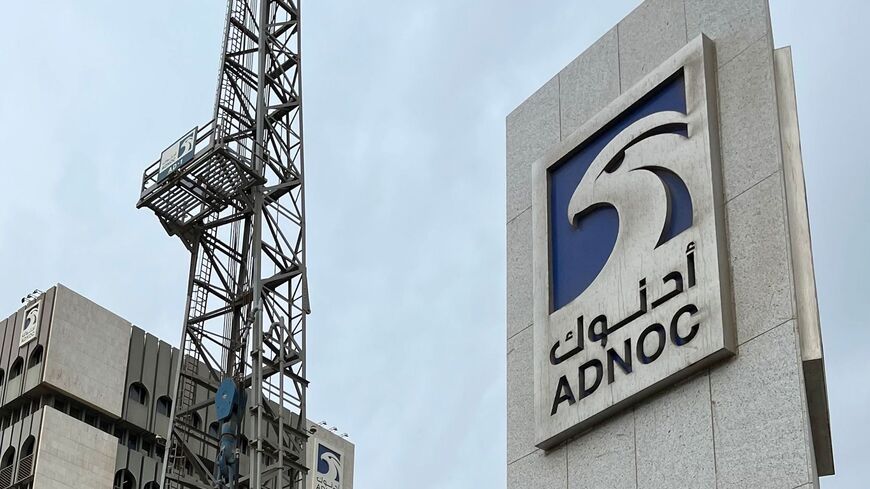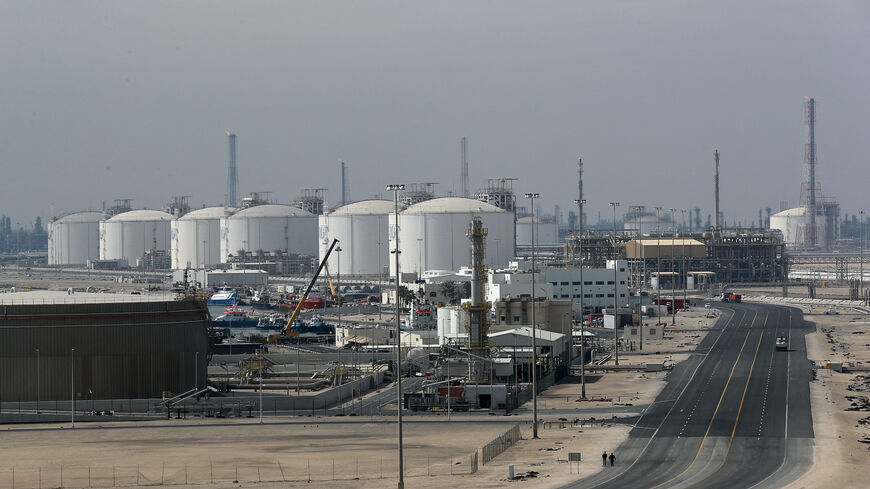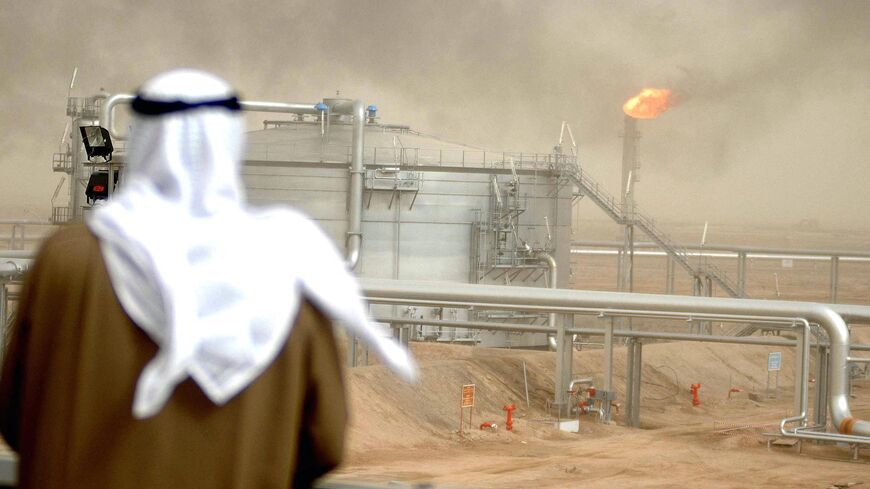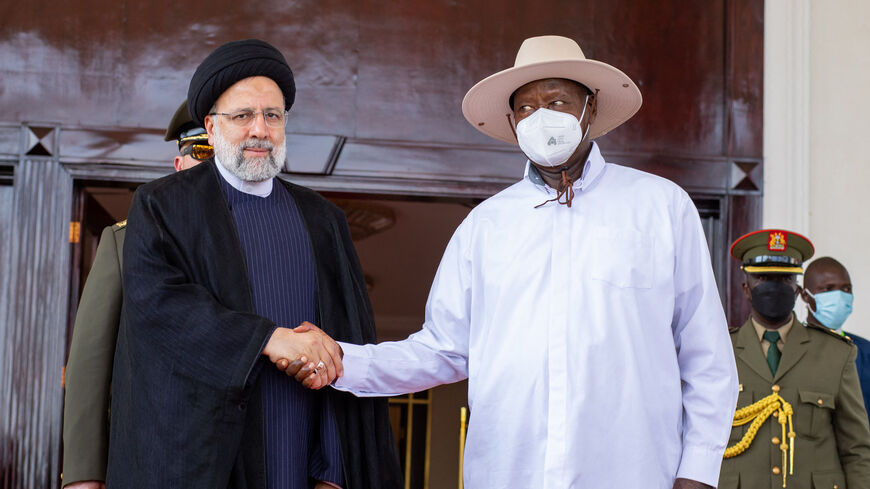Kuwait’s political crisis is undermining energy growth and options
Al-Monitor Pro Members
Gerald Kepes
President, Competitive Energy Strategies, LLC
May 17, 2023
Kuwait’s oil sector has had a 4 million barrel per day (mmb/d) crude production capacity target since 2010, if not before. In 2021, the date for achieving the goal was moved from 2020 to 2035. Meanwhile, capacity had declined to 2.8 mmb/d from 3.35 mmb/d. Kuwait Petroleum Corporation’s (KPC) upstream arm, Kuwait Oil Company (KOC), is clearly struggling to execute on this and other strategic objectives.
An increasingly mature, technically complex upstream sector requires risk taking, higher spending and expanded capabilities. Increased investment in downstream/petrochemicals in an integrated energy sector requires timely execution. Yet KPC has experienced minimal growth in institutional capacity over the past three decades due to having zero strategic autonomy and limited operational autonomy. In order for results to change, either the political management of the energy sector or the design of the sector must change.
Goals and challenges
- Current crude production is 2.71 mmb/d versus an OPEC quota of 2.68 mmb/d. A new OPEC agreement assigned a quota or “voluntary cut” of 2.55 mmb/d from May to December 2023. In addition, roughly 300,000 b/d of natural gas liquids and condensates are produced, not part of its OPEC quota. Crude output reached a high of 2.85 mmb/d in 2016.
- The 4 mmb/d production capacity target was to be achieved in 2020 and maintained until 2030. By 2018, the 2020 timing had slipped. In 2021, the new date for achieving the goal became 2040, but was then adjusted yet again to 2035. Currently capacity is roughly 2.9 mmb/d.
- Sources of supply (including natural gas):
- The Burgan oil field (operated by KOC) has a production capacity of about 1.4 mmb/d, 48% of the total. Burgan is a very mature oil field and had been declining at a rate of 6% to 7% per annum in recent years. If Burgan production cannot be stabilized, then it is extremely difficult to grow Kuwait output overall. KOC now targets a 1.5 million b/d capacity for the field. Additional crude comes from adjacent fields.
- West Kuwait oil fields (KOC operator) produce roughly 500,000 b/d, declining at a rate of about 4% to 5% per year recently.
- North Kuwait fields (KOC operator) produce about 600,000 b/d and 6 billion cubic meters per year (bcm/y) of non-associated gas.
- Kuwait receives 50% of Partitioned Neutral Zone (PNZ with Saudi Arabia) crude production (operated by Chevron onshore and offshore by a Saudi Aramco/KOC joint venture), which is about 200,000 b/d (net to Kuwait) currently.
- 1.7 to 1.8 bcm/y of associated natural gas is produced with oil output from the various fields above.
- Much of Kuwait’s challenge is managing production decline. Higher water cuts, more investment in required secondary and tertiary recovery, all drive complexity and higher cost.
- On the growth side, KOC's challenges are also profound and in newer, less well-known reservoirs. Deep, high pressure/high temperature (HPHT) sour gas, light and heavy crudes (see the northern Kuwait fields) all amount to more complexity and a higher cost per unit of production.
- Poor goal setting (with high risk of achievement) can be just as detrimental as operational failure to achieve well-selected objectives.
- Kuwait has struggled for years to increase its non-associated natural gas production. Last year saw high LNG costs (Kuwait imports LNG for power given insufficient domestic gas output), with some respite offered subsequently by cheap imports of Russian and Iranian high sulfur fuel oil (HSFO) burned for power generation (seasonal).
- KPC is concluding a downstream investment program (clean fuels upgrading, new Al Zour refinery and LNG import facility) on the order of $33 billion, which should increase flexibility for upstream spending. Downstream spending is not done, however, KPC has ambitious plans for new petrochemicals capacity this decade.
- The downstream sector cannot perform optimally if dedicated input streams cannot be assured. Downstream's record of safety incidents and project delays describes a performance similar to that for upstream.
Institutional capacity
- An increasingly mature, technically complex upstream sector requires risk taking, higher spending and expanded capabilities. Increased investment in petrochemicals in an integrated energy sector requires timely critical path execution.
- Remarkably, pre-1990, KPC was very innovative, pioneering a captive refining strategy in energy markets. It had a unique Q8 branding strategy in European product markets and created Kufpec to enter international upstream to replace domestic production. KPC has experienced minimal growth in institutional capacity over the past three decades due to having zero strategic autonomy and limited operational autonomy.
- Strategic autonomy is determined by the degree of control over budget planning, formulation of growth objectives, international expansion decisions, business areas focus and the ability to prioritize segments of the value chain, with a high degree of emphasis on commercial objectives. It is the Supreme Petroleum Council that sets the strategic direction and budgets for KPC. Oversight roles in this area are vigorously contested in Kuwait’s National Assembly.
- Operational autonomy determines the ability to independently choose which projects to invest in, and how to manage those projects, appropriate service sector partners, and employ skilled personnel. Greater operational autonomy goes hand-in-hand with increased capabilities. KPC/KOC’s limited operational autonomy is due to interference with choice of service sector partners, project management and choice of personnel.
Energy sector design
- Kuwait’s upstream sector does have some foreign company participation. Technical service agreements (TSA) have been in place for decades. Currently, there are several enhanced TSAs involving KOC and Shell (northern Kuwait fields) and BP (Burgan). The first enhanced TSA, or ETSA, was signed with Shell for the development of technically difficult HPHT sour gas fields in northern Kuwait in 2010. The ETSA elements include: KOC as operator, making all strategic and operating decisions with the advice and support of the foreign company; focus on achieving KOC's strategic targets; foreign company technical staff seconded into KOC's operating structures; compensation via fees on a per man-hour basis; and performance bonus structure.
- The ETSAs appear to be inadequate given KOC’s institutional capacity and performance.
- Kuwait has had decades to observe operational and contractual performance in neighboring countries. Its upstream sector is in the same petroleum basin as that for Iraq, Saudi Arabia, Iran, Qatar and the UAE (all or part). Same reservoirs, source rock, thermal history and operating environment, with very different performance in some cases and quite similar in others. It is well positioned to assess the strengths and weaknesses of neighbors at no cost to itself.
- Yet the government has failed to leverage its surrounding examples. Given the importance of oil revenues to the budget, this is a critical and remarkable failure.
- Organizations are designed to deliver the results that they deliver. The Kuwait energy sector appears to be designed for political purpose; political elites have created a patronage system, with the National Assembly an arena for political confrontation and contestation. Oil Ministry leadership is caught up in political battles in the parliament with resultant high turnover. The parliamentarians demand the energy sector employ their constituents, leading to over-employment and inadequate technical knowledge.
Scenario 1: One scenario envisions an energy sector further weighted toward downstream/petrochemicals, value-added and renewables.
Kuwait would abandon its 4 mmb/d target and focus on producing 3 mmb/d as efficiently as possible. More of the production gain would come from Kuwait’s share of PNZ. KOC’s effort would shift somewhat to natural gas output. KPC would remain a critical institution. Kuwait would not be as important a player in OPEC+ because it would not be in a position to increase crude output but would benefit from price volatility and be in a better position to withstand lower prices. Its energy sector would be much better positioned for the energy transition. But this would appear to have a low probability, requiring a different political bargain to guarantee more operational autonomy, allowing KPC to enhance institutional capacity.
Scenario 2: A second scenario would preserve the current objectives for Kuwait’s oil and gas, assumes no substantial change in KPC but requires an expanded role for the foreign sector.
This has been proposed/suspected on multiple occasions, is bitterly opposed by opposition politicians in the parliament and broadly is ruled out by Kuwait’s constitution. One could envision a special economic zone with different contractual terms targeting investment in bundled natural gas, crude oil and renewables operated by a foreign company in partnership with KOC — a fusion of the “PNZ” and a proposal similar to TotalEnergies’ oil, natural gas and renewables proposal in Iraq (upgrade from Iraq’s technical service contracts). This scenario too would require a new political arrangement albeit narrowly focused on the carveout.
Most likely, Kuwait will seek to muddle through with current arrangements. The 4 mmb/d target remains an aspirational goal. The absence of radical change in the fundamental politics of Kuwait and its NOC’s autonomy constrains institutional capacity. Production performance will struggle, but there will be incremental gains — North Kuwait or PNZ for example, but with some offsetting declines. The Al Zour refinery is onstream with teething problems, but these will be worked out in time. Refined product revenues now rival crude and may surpass them. Power generation will continue to burn cheap HSFO, with environmental consequences. Non-associated gas will increase as delayed Jurassic production facilities eventually come online. If realized oil prices are $80 or higher, Kuwait’s political structure could be sustainable for another five years. Costs are rising, however, and $80 per bbl may not be adequate thereafter. This scenario does not have a lot of options.
Meanwhile, Kuwait’s Crown Prince Sheikh Mishal Al Sabah has dissolved the recently reinstated parliament and called for new elections, which does not bode well for political stability.
Gerald Kepes has more than 35 years of experience as a consultant and petroleum geologist in the global energy industry. Most recently, he was Vice President in Energy & Natural Resources for IHS Markit (now S&P Global), and previously, a PFC Energy Partner, where he established PFC’s global upstream consulting practice. He also held various positions with a US oil company in North Africa and the Middle East.
We're glad you're interested in this memo.
Memos are one of several features available only to PRO Expert members. Become a member to read the full memos and get access to all exclusive PRO content.

Already a Member? Sign in
The Middle East's Best Newsletters
Join over 50,000 readers who access our journalists dedicated newsletters, covering the top political, security, business and tech issues across the region each week.
Delivered straight to your inbox.
Free
What's included:
Free newsletters available:
- The Takeaway & Week in Review
- Middle East Minute (AM)
- Daily Briefing (PM)
- Business & Tech Briefing
- Security Briefing
- Gulf Briefing
- Israel Briefing
- Palestine Briefing
- Turkey Briefing
- Iraq Briefing
Premium Membership
Join the Middle East's most notable experts for premium memos, trend reports, live video Q&A, and intimate in-person events, each detailing exclusive insights on business and geopolitical trends shaping the region.
$25.00 / month
billed annually
$31.00 / month
billed monthly
What's included:
Memos - premium analytical writing: actionable insights on markets and geopolitics.
Live Video Q&A - Hear from our top journalists and regional experts.
Special Events - Intimate in-person events with business & political VIPs.
Trend Reports - Deep dive analysis on market updates.
We also offer team plans. Please send an email to pro.support@al-monitor.com and we'll onboard your team.
Already a Member? Sign in






